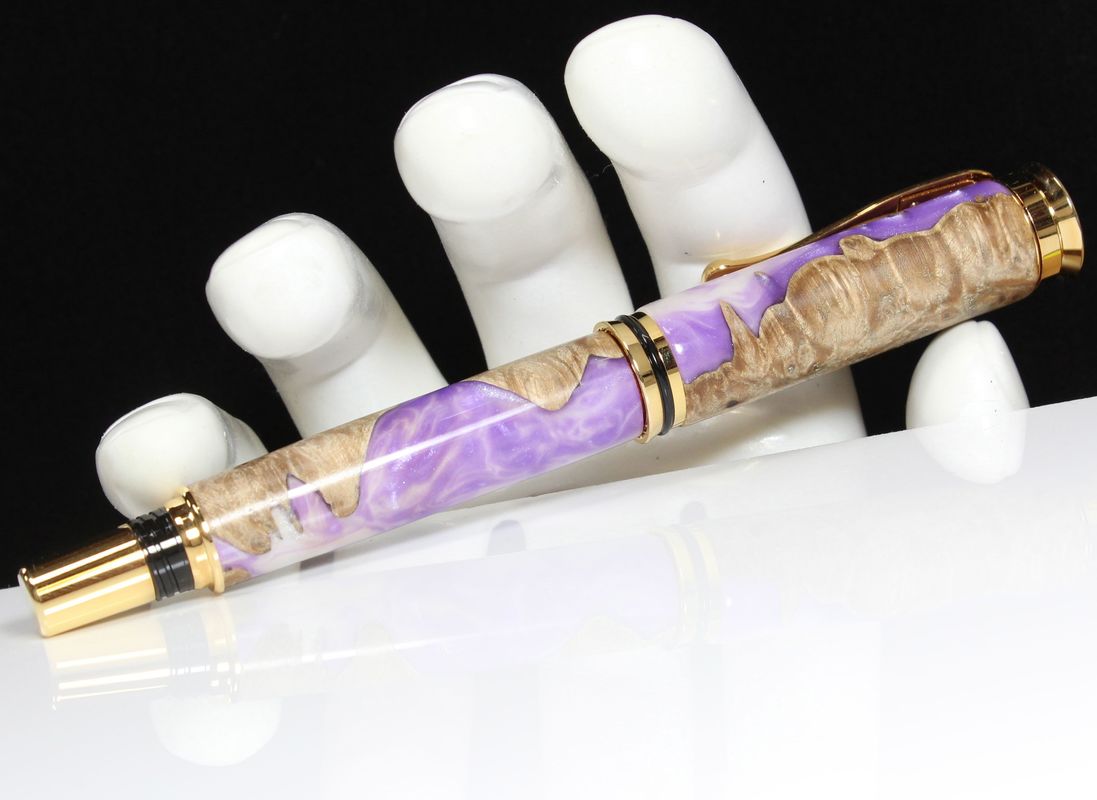Becoming a Penmaker
The idea to hand craft high quality pens started when I learned that the Parker Pen Co. was unable to repair my Parker Duofold ball-point pen under its lifetime unconditional warranty (because they ran out of parts). Unable to have my pen repaired or find a suitable replacement, I decided to make my own pen. Now that I have the lathe, tools, parts, and skills to make pens, I am happy to be able to make one for you!
|
PenCREATION
There are many steps involved in handcrafting a pen, but here are some of the major ones:
|
PenCARE
If you are considering buying a pen, or have already done so, and are interested in learning how to keep it looking as nice as new, please read on. Like all precision instruments and things of beauty, a quality pen has to be properly cared for. When transporting or storing your pen, it should be housed in a safe place, such as a shirt pocket, pen case, or the sheath that it was shipped in. The metal platings, and acrylic or wood pen bodies are very durable, but can be damaged if dropped, scratched if abraded against hard materials, or permanently altered if exposed to harsh chemicals. Here are some care tips that are specific to the material that the pen body is made from: ACRYLIC - Acrylics are susceptible to cracking or chipping if dropped onto hard surfaces, and may also be scratched. Scratches can be removed with a high-quality rubbing compound. Light scratches and dull surfaces can be restored with a plastic polish. WOOD - All woods have been stabilized with a casting resin, kiln dried, or seasoned for a reasonable amount of time and should not crack or split under normal use. However, like fine furniture, some special care is required to ensure the longevity of a wood pen. It is best to avoid subjecting your pen to extremes of temperature and/or humidity (e.g., never leave your pen in the car). Also, keep your pen out of direct sunlight, which can negatively affect the finish of the pen. The finish of a bare wood pen should be cared for with a light wax or coat of furniture polish, followed by light buffing to restore the finish. How often this will be necessary will be determined by the type of wood, how often it is used, and the manner in which it is stored. With time, the natural oils in your hands may affect the finish coat, and bring the wood to a natural patina. The finish of wood pens that are sealed in cyanoacrylate can be cared for as if acrylic (see above). |

